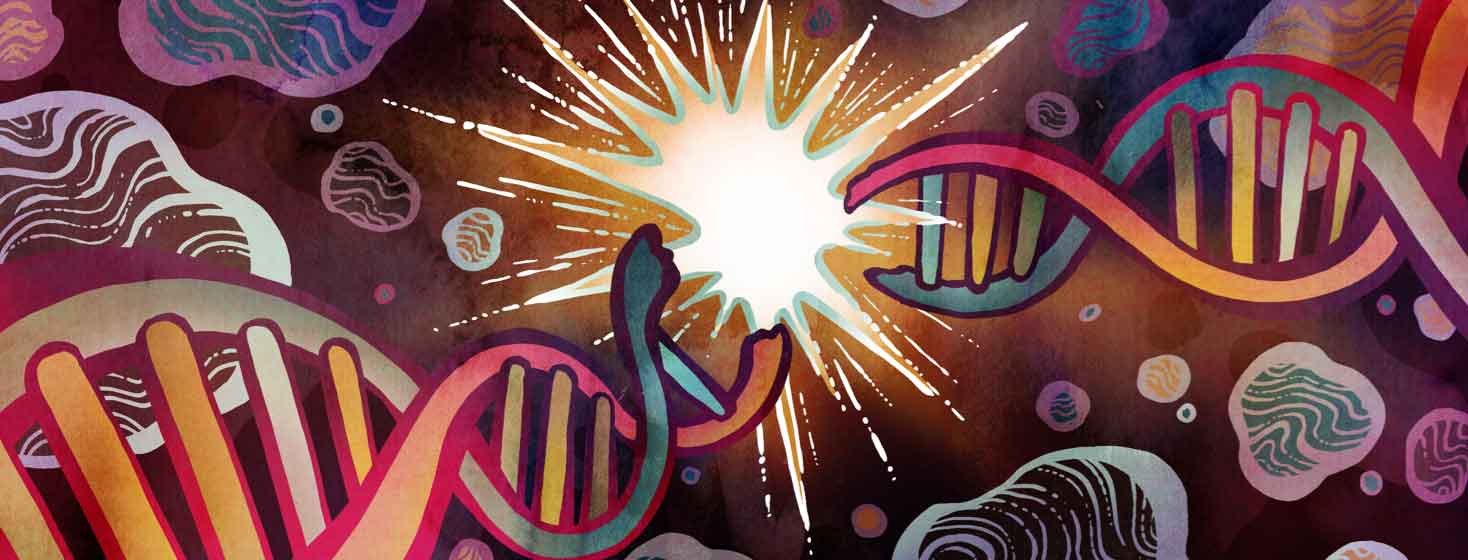Clinical Trial to Investigate EBT-101 as a Functional Cure for Chronic HIV
The human immunodeficiency virus (HIV) attacks cells in the immune system. If left untreated, HIV can lead to acquired immunodeficiency syndrome (AIDS).
HIV is a retrovirus, which means it has RNA as its genetic information. RNA is very similar to DNA. Whereas DNA is 2 strands of protein woven together, RNA is just 1 strand.
Why is finding an HIV cure hard?
HIV is able to turn its RNA into DNA after the virus enters the body. The virus can insert its DNA into our DNA to make copies of itself.1
Because HIV can live in our DNA, it has been difficult to find a cure for HIV. As a result, much focus has been placed on treating HIV with antiretroviral drugs. These drugs prevent the virus from making copies of itself and attacking more cells.
Antiretroviral drugs have been very effective. However, they cannot remove HIV genes from our DNA.1
EBT-101 as a potential functional cure
CRISPR-Cas9 is a relatively new gene-editing technology. Experts have been researching if it can be used to cure HIV.
Excision Biotherapeutics, a biotechnology company, has created an HIV therapy using CRISPR that has been approved for use in a human clinical trial.2
Eliminate HIV-compromised DNA from genes
Known as EBT-101, the therapy uses CRISPR technology to deliver a one-time treatment intended to eliminate HIV-compromised DNA from genes.
In September 2021, the U.S. Food and Drug Administration (FDA) accepted the Investigational New Drug application (IND) for EBT-101. The IND clearance allows Excision to begin the first clinical trial in people to evaluate the safety, tolerability, and efficacy of EBT-101 in people with HIV.2
The trial is expected to begin in late 2021.
What will happen in the trial?
Before a new drug or treatment is approved for the public, it must go through many trials. Usually, it is tested in cells, then in animals, and then multiple trials in humans.3
The first step in human trials is to make sure the treatment is safe and does not have severe side effects.
Phase 1/2 clinical trial for EBT-101
In phase 1/2 clinical trial for EBT-101, a group of healthy people living with HIV taking antiretroviral therapy will receive 1 dose of EBT-101 through an IV.3
The participants will continue to take their antiretroviral therapy during the trial.
Once researchers determine the treatment is safe, they will move to the next step. During this time, participants will stop their antiretroviral therapy for a certain period of time.3
Researchers will run tests to see if the virus becomes active in their bodies, remains controlled, or is cured. The goal of this step is to see if the treatment works. If the treatment is safe and effective, it could be approved for the public.3
What comes next?
These trials could take months, if not years. Researchers will collect data and analyze it before they decide if this technology is effective for HIV. If so, the treatment will hopefully be approved. If not, researchers will need to start over again.3
DNA and CRISPR gene therapy
DNA is found in every cell of our body. It is a blueprint or instruction manual for the body’s growth and functioning.
DNA is made up of a long string of molecules, called nucleotides, connected together. You can think of each nucleotide as a letter making up a word. When you read all the words in order, it tells a certain story.
Just like moving words in a sentence, if we move nucleotides in DNA, the meaning of the sentence or story changes.
CRISPR technology is used to edit DNA. It can move, remove, or add pieces of DNA. Scientists are currently researching how to use this technology to treat certain diseases or genetic disorders. The treatment in this trial cuts HIV DNA in small pieces to remove it.2,4
The importance of these clinical trials
Antiretroviral therapy has been groundbreaking. Because of it, people living with HIV can have a healthy, fulfilling life. However, HIV is still present in a person's DNA.
A cure for HIV would be life-changing for hundreds of thousands of people living with the disease.
Implications for other health conditions
If this research is successful, scientists may be able to create therapies for other genetic disorders. Genetic disorders are notoriously difficult to treat.
This could be a turning point in medicine for creating a new class of treatments.2

Join the conversation